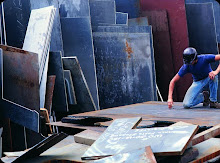Sustainable benefits of concrete structure:
Energy efficiency
Energy used in producing and combining the raw materials of
the concrete is relatively small as compared to most man- made structural
building materials, although large amounts of carbon dioxide are produced by
the chemical reactions in cement manufacture. Moreover, energy requirements for
transportation of concrete are low because it is usually manufactured within
100 kilometers of the job site from local resources. Also, air leakage from
concrete walls are far lesser (compared to wood frames), this accounts less
percentage of energy loss. Concrete's thermal mass reduces temperature swings
inside and minimizes heating and cooling costs, this increase the efficiency of
both residential and commercial buildings. To create an energy efficient
building, modern concrete wall systems use both external insulation and thermal
mass ,insulation reduces energy loss through the
building envelope, thermal mass uses walls to store and release energy.
Fire safety
Concretes do not burn! Therefore, it is more resistant to
fire than wood or steel. Concrete has lower risk of collapse and is an effective
fire shield, providing safe means of escape and protection for occupants. Precast
concrete (cast-in-place and hollow) are the materials for producing non-combustible
construction.
Earthquake safety
Large earthquakes can generate large shear loads on structures.
Concrete has strong compression strength, but is weak in tension. Shear loads
of large earthquakes cause tensional and compressional loads to the structure. These
risks can be reduced through seismic retrofitting of at-risk buildings.
Concrete’s lateral stiffness also provides the best
resistance to high winds, hurricanes, tornadoes that result in minimal
horizontal movement.

Good idea! I love your colourful designs.
ReplyDeleteTerazo | Terrasso Tile